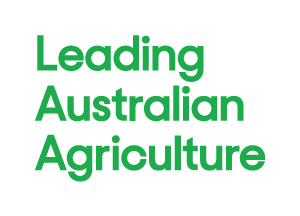The National Farmers’ Federation (NFF) congratulates the Government on bringing a Peru-Australia Free Trade Agreement (PAFTA) to life for Australian farmers.
Announced today, PAFTA offers key market access opportunities for Australia’s agriculture exports, but the bigger story is the strategic importance of the agreement.
The NFF believes PAFTA goes beyond a mere ‘announceable’.
“Today’s news keeps Australia’s trade agenda moving forward and creates additional demand for Australian farm exports in a fast-growing market with a sizeable population of 31.5 million,” NFF President Fiona Simson.
During the past 10 years Peru was the fastest growing economy in Latin America with the same gross domestic product as Vietnam (about $150 billion) and the same consumer base as Malaysia (30 million).
Ms Simson said as it stood, Australian farmers were all but locked out of this valuable market.
“In Peru, Australian farm products face tariffs of between 9%-29% with the potential for tariffs as high as 68% under Peru’s existing tariff schedule through the Word Trade Organisation.
“In 2016 the South American nation imported $6 billion of agricultural goods, however only $6.7 million of this came from Australia, due partly to preferential access for our competitors including the United States, Canada and the European Union.”
Under the terms of the agreement, enhanced market access would be available from day one for sugar, dairy, rice, sorghum, sheep meat, seafood and wine. The FTA also includes staggered benefits for grains.
“What is great about the deal, is that PAFTA sends some great signals to the rest of the world, in the midst of a surge in protectionist sentiment,” Ms Simson said.
“It is also an important stepping stone towards a larger trade deal with the Pacific Alliance which includes Mexico, Peru and Chile. It also keeps up momentum for the Trans Pacific Partnership (TPP) process.”
“For red meat, in particular it provides greater gains than were on offer in the TPP.
“It sets a heartening precedent for a ‘sensitive’ sector as sugar, that hasn’t benefited significantly from existing FTAs.
“PAFTA offers some of the best market access terms our cane farmers have seen in the past two decades.
“It also removes other trade barriers, including price band, which can often sneak through in the urgency to finalise an agreement.”
In 2016-2017 the farm sector was valued at a record $60 billion. This growth has been spurred on by the Government’s commitment to negotiating valuable FTAs including the China-Australia Free Trade Agreement (ChAFTA), Japan Australian Economic Partnership Agreement (JAEPA), the Korean-Australia Free Trade Agreement (KAFTA) and now PAFTA.
About three quarters of what Australian farmers produce is exported.
“Exploring further trade opportunities, like PAFTA, will go a long way to seeing our industry continue to grow and reach a production value target of $100 billion by 2030,” Ms Simson said.
The NFF thank Minister Ciobo and his Government colleagues for their dedication to pursuing preferential trade arrangements for Australian exports, including agriculture.
“The preferential trade of our food, fibre and forestry products is not only good for farmers but the national economy,” Ms Simson said.
“Agriculture powers 1.6 million jobs across the farm sector supply chain. Increased farm, food and fibre exports will undoubtedly lead to more Australian jobs.
“The NFF, on behalf of Team Australian Agriculture, stands ready to work with the Government on getting the required market access protocols in place to see the benefits of PAFTA become a reality as soon as possible,” Ms Simson said.
About PAFTA for agriculture
• Sugar: on entry into force of the agreement, Australia will have duty free access of 30,000 tonnes of sugar into Peru, growing to 60,000 tonnes in five years and 90,000 tonnes in 18 years – this is more than any other sugar exporting country has achieved in the last twenty years.
• Beef cuts: tariffs (up to 17 per cent) will be eliminated within five years – this ensures ensure Australian beef farmers will have duty free access to the Peruvian market at the same time as US farmers.
• Dairy: on entry into force of the agreement, Australia will have duty free access of 7,000 tonnes of dairy products into Peru, growing to 10,000 tonnes in five years.
• Rice: on entry into force of the agreement, Australia will have duty free access of 9,000 tonnes of dairy products into Peru, growing to 14,000 tonnes in five years.
• Sorghum: on entry into force of the agreement, Australia will have duty free access of 15,000 tonnes of dairy products into Peru, growing to 20,000 tonnes in five years.
• Sheep meat: tariffs on all sheep meat (up to 9 per cent) will be eliminated on entry into force of the agreement.
• Seafood: Peru will eliminate all tariffs (up to 9 per cent) on entry into force.
• Almonds: immediate elimination of duties on all tariff lines (up to 9 per cent).
• Wine: immediate elimination of duties across lines of commercial interest to Australia with the remainder being phased out over 5 years (up to 9 per cent).
• Wheat: tariffs on all wheat (up to 9 per cent) will be eliminated on entry into force of the agreement.





Add comment